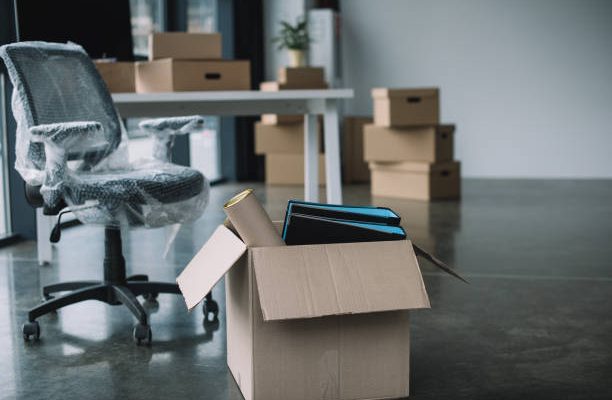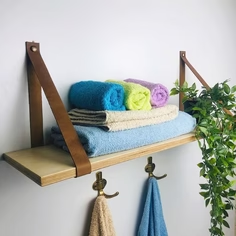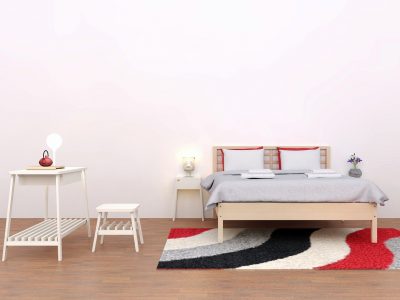Furniture is an essential part of any home or office, and sometimes it becomes necessary to move or store these items. However, moving and storing fragile furniture items can be a challenging task. Fragile furniture, such as glass tables or delicate antiques, requires extra care and attention to ensure their safety during transportation and storage. Visit this website to get the best professionals who will take care of all the packing, loading, and moving for you, eliminating the need for you to move your belongings yourself. Also, because they have the means to finish the task quickly, they guarantee that your relocation will be performed in a timely and effective manner.
In this article, we will discuss some useful tips and techniques to safely move and store fragile furniture items.
Moving and storing fragile furniture items can be a daunting task, but with the right tips and techniques, it can be done safely and efficiently. Here are some useful guidelines to follow:
1. Planning and Preparation
The first step in safely moving and storing fragile furniture items is proper planning and preparation. This involves assessing the furniture items, understanding their fragility, and planning the logistics of transportation and storage. Here are some key points to consider:
- Assessing the Furniture: Begin by examining each furniture item to determine its fragility. Look for any delicate components, such as glass panels, intricate designs, or easily breakable parts. Take note of these aspects to ensure appropriate handling and protection.
- Understanding Fragility: Once you have identified the fragile elements, it is crucial to understand how to handle and protect them during the moving and storage processes. Research the manufacturer’s recommendations or consult a professional to learn about specific handling techniques or precautions needed for each item.
- Logistics of Transportation: Consider the distance and mode of transportation when planning to move fragile furniture. If you are moving locally, you may be able to transport the items yourself. However, for long-distance moves, hiring professional movers experienced in handling delicate items is highly recommended. They will have the necessary equipment and expertise to ensure safe transportation.
- Proper Packaging: Invest in high-quality packing materials to protect fragile furniture during transportation and storage. Use bubble wrap, foam padding, or furniture blankets to wrap each item individually. Secure the wrapping with packing tape to prevent it from coming loose during transit.
- Disassembling if Necessary: If possible, disassemble the furniture to reduce the risk of damage. Remove any removable parts, such as legs, shelves, or glass tops. Keep all screws, bolts, and small components in labeled bags to ensure easy reassembly later.
2. Disassembly and Packing
Disassembling fragile furniture items before moving or storing them can help reduce the risk of damage. Here are some tips for disassembling and packing fragile furniture:
- Take inventory: Before disassembling any furniture, make sure to take inventory of all the parts and hardware. This will help ensure that nothing gets lost during the process.
- Gather the necessary tools: Gather all the tools you will need to disassemble the furniture. This may include screwdrivers, Allen wrenches, pliers, and a hammer. Having the right tools on hand will make the process much easier.
- Follow the manufacturer’s instructions: If possible, refer to the manufacturer’s instructions for disassembling the furniture. This will provide you with the proper steps to follow and ensure that you don’t accidentally damage any parts.
- Remove any removable parts: Start by removing any removable parts, such as cushions, glass tops, or drawers. These can be packed separately to prevent damage during transportation.
- Label and bag small parts: As you disassemble the furniture, be sure to label and bag all small parts. This will make it easier to reassemble the furniture later on. Use ziplock bags or small containers to keep everything organized.
- Wrap delicate pieces: For delicate or fragile pieces, such as glass shelves or mirrors, be sure to wrap them in bubble wrap or packing paper. This will provide extra protection during the move or storage.
3. Choosing the Right Transportation Method
Choosing the right transportation method is crucial for safely moving fragile furniture items. Here are some options to consider:
- Professional Moving Services: Hiring professional movers can be the most reliable option when it comes to transporting fragile furniture. They have the experience, expertise, and necessary equipment to handle delicate items with care. Professional movers will also take responsibility for packing, loading, and unloading your furniture, ensuring its safe transport.
- Furniture Pads and Blankets: If you decide to move your furniture yourself, using furniture pads and blankets can provide some protection. These pads and blankets can be wrapped around the furniture to prevent scratches, dents, and other damages during transportation. They offer some cushioning and act as a barrier between the furniture and any hard surfaces.
- Bubble Wrap and Packing Paper: For extra protection, consider wrapping your fragile furniture items in bubble wrap or packing paper. This will help absorb any impact or shocks during transit. Secure the wrap or paper with packing tape to ensure it stays in place. Pay special attention to fragile areas, such as glass tabletops or delicate wooden structures.
- Disassembling Furniture: If possible, disassembling your furniture before transportation can make it easier to handle and reduce the risk of damage. Remove any detachable parts, such as legs, cushions, or glass panels, and pack them separately. This will also make the furniture more compact, allowing for better utilization of space in the moving vehicle.
- Proper Loading and Securing: Whether you are using a professional moving service or doing it yourself, make sure the furniture is loaded and secured properly in the transportation vehicle. Use straps, ropes, or bungee cords to secure the furniture and prevent it from shifting or falling during transport. Distribute the weight evenly to maintain balance and stability.
- Appropriate Transportation Vehicle: The choice of transportation vehicle will depend on the size and quantity of furniture to be moved. Consider using a moving truck, van, or trailer that can accommodate the furniture without overcrowding. Make sure the vehicle is clean, well-maintained, and equipped with proper padding or tie-down points to secure the furniture.
- Careful Driving: The safe transportation of fragile furniture also depends on careful driving. Avoid sudden stops, sharp turns, and rough roads that can potentially cause damage. Drive cautiously, maintaining a safe distance from other vehicles, and be aware of any potential hazards on the road.
4. Proper Storage Techniques
If you need to store your fragile furniture items for an extended period of time, it’s important to use proper storage techniques to keep them safe. Here are some tips for storing fragile furniture:
- Clean and prepare the furniture: Before storing any fragile furniture, make sure to clean it thoroughly. Dust and dirt can cause damage over time, so wipe down surfaces and vacuum any upholstery. Remove any loose or delicate components, such as glass shelves or removable legs, and pack them separately.
- Disassemble if possible: If your furniture can be disassembled, it’s best to do so before storing. This will not only save space but also reduce the risk of damage during transportation and storage. Keep all the necessary screws, bolts, and other small components in a labeled bag to ensure easy reassembly later on.
- Wrap and protect: Use protective materials to wrap your furniture and prevent scratches, dents, or other potential damage. Bubble wrap, moving blankets, or furniture pads are ideal for this purpose. Pay special attention to fragile areas such as glass surfaces, corners, or delicate decorative elements. Secure the protective materials with tape to keep them in place.
- Choose the right storage unit: When storing fragile furniture, it’s crucial to select a suitable storage unit. Opt for a climate-controlled unit if possible, as extreme temperatures or humidity can cause warping, cracking, or mold growth. Additionally, ensure that the unit is clean and dry to prevent any moisture-related issues.
- Arrange and stack carefully: When placing your furniture inside the storage unit, arrange and stack it in a way that minimizes the risk of damage. Place heavier items at the bottom and lighter ones on top. Use furniture sliders or cardboard sheets between stacked items to reduce friction and prevent scratches. Leave enough space between items to allow for air circulation and easy access.
- Don’t overload the unit: Avoid overpacking the storage unit, as it can lead to unnecessary pressure on your fragile furniture. Ensure that there is enough room for each item to be stored without being squeezed against other objects. Overloading can increase the chances of damage during storage or retrieval.
- Regularly check and maintain: Even with proper storage techniques, it’s essential to periodically check on your fragile furniture. Visit the storage unit and inspect the items for any signs of damage, pests, or humidity-related issues. If necessary, rewrap or reposition the furniture to ensure its continued safety.
5. Labeling and Organization
Proper labeling and organization are essential for easy retrieval and safe handling of stored furniture items. Here are some tips for labeling and organizing your furniture:
- Categorize your furniture: Start by categorizing your furniture based on its type, such as chairs, tables, cabinets, etc. This will help you easily locate specific items when needed.
- Label clearly: Use clear and descriptive labels for each furniture item. Include details like the name of the item, its dimensions, and any special instructions for handling or assembly. This will make it easier to identify the furniture and its specific requirements.
- Use color-coded labels: Consider using color-coded labels to further streamline your organization’s system. Assign a specific color for each category of furniture, and use corresponding colored labels for easy identification. For example, all chairs could be labeled with blue labels, while tables could have green labels.
- Create an inventory list: Keep a detailed inventory list of all your furniture items. Include information such as the item’s name, description, location within the storage area, and any additional notes. This will help you keep track of your furniture and quickly locate specific items when needed.
- Consider using storage bins or shelves: Invest in storage bins or shelves to keep your furniture items organized and protected. Use bins that are suitable for the size and weight of the furniture, and label them accordingly. Shelves can also help maximize your storage space and allow for easy access to different items.
- Keep similar items together: Group similar furniture items together to make it easier to locate them. For example, store all dining chairs together and all office desks in one area. This will help you find what you need without having to search through different sections of your storage area.
- Use protective covers: If you’re storing furniture for a long period of time, consider using protective covers to prevent dust, dirt, or damage. Use covers that are specifically designed for furniture and ensure they are properly secured.
Conclusion
Moving and storing fragile furniture items requires careful planning, preparation, and execution. By following the tips and techniques discussed in this article, you can ensure the safe transportation and storage of your valuable furniture. Remember to assess the fragility of each item, disassemble and pack them properly, choose the right transportation method, use proper storage techniques, and label and organize the items for easy retrieval. With these precautions in place, you can enjoy your furniture for years to come, whether it’s in your new home or safely stored away.















